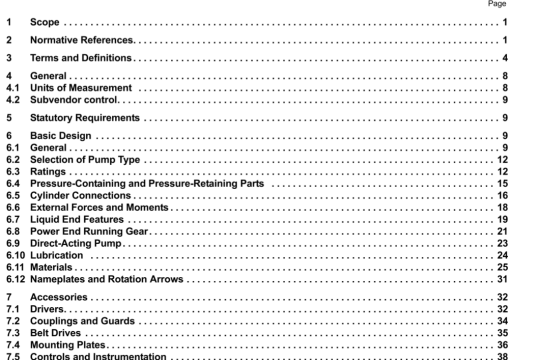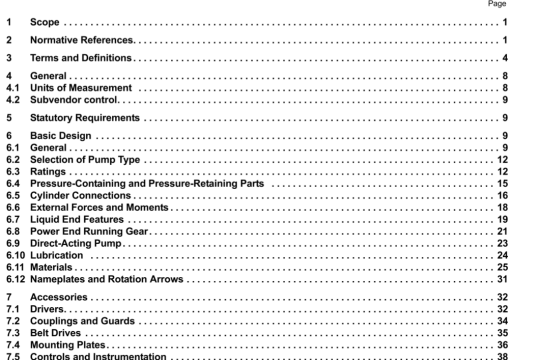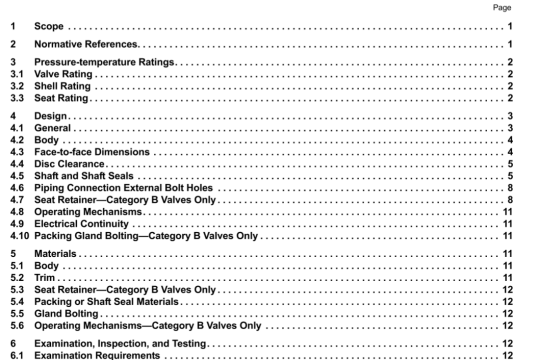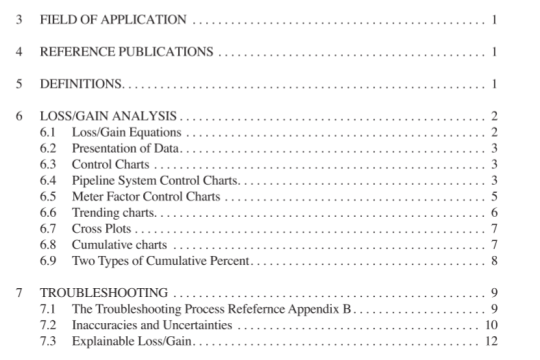API BULL 16H:2022 pdf download
API BULL 16H:2022 pdf download.Automated Safety Instrumented Systems for Onshore Blowout Preventer Actuation.
4.3.2.5 Remote Telemetry Units
A remote telemetry unit (RTU) transmits bidirectional data from sensors located on mechanical components and monitoring equipment to equipment under control. The data from RTUs are either at defined intervals or by exception. Control algorithms can be established to provide on/off control or a variable control.
4.3.3 Equipment Under Control
4.3.3.1 Drilling Control System
The DCS is the main interface for the driller to operate the drilling equipment. These systems can be fully integrated with all mechanical components or be comprised of individual systems that are controlled in a central location (i.e., driller’s control room). This system controls all the equipment needed to drill the well. This system comprises the equipment in 4.3.3.1.1 through 4.3.3.1.3.
4.3.3.1.1 Top Drive
The top drive is a device suspended in the derrick that, during drilling operations, serves the following functions:
rotating the drillstring; providing a conduit for drilling mud; disconnecting/connecting pipe; closing in the drill pipe by an integrated kelly valve; and lifting/lowering the drill string by use of the elevator. Top drives can be electrically or hydraulically driven.
4.3.3.1.2 Drawworks
Drawworks are hoisting mechanisms, or winches, used to spool the hoisting cable in a controlled fashion.
4.3.3.1.3 Mud Pumps
Mud pumps are used to circulate drilling fluid in the well. The fluid, usually drilling mud, is pumped down the drill string and returns to the surface through the annulus of the wellbore.
4.3.3.2 Well Control System
The WCS is used to bring the well to a safe state after the detection of an influx and may be considered as a basic process control system (BPCS). Human-machine intervention is currently required to facilitate the functionality of the WCS. This equipment is generally classified as pressure control equipment and is distinctively different than other equipment that is unable to contain wellbore pressure, such as the HP mud system. This system comprises the equipment in 4.3.3.2.1 through 4.3.3.2.5..
4.3.3.2.1 Blowout Preventer
BOPs, whether annular or ram type, are equipment installed on the wellhead for the express purpose of containing weilbore fluids in the annular space between the casing and tubulars, or in an open hole during well drilling, completion, and testing operations. BOPs are available in a wide range of pressure ratings between 1000 psi (6.9 MPa) and 30,000 psi (206.8 MPa), and bore sizes ranging from 7 to 1/16 in. to 30 in.
Ram-type BOPs use metal blocks with assembled elastomer seals, or rams, to seal off pressure on a wellbore. There are three main types of rams: blind, blind shear, and pipe. Blind rams are used to fully close and seal the wellbore when no tubulars are present in the bore. Blind shear rams are capable of sealing on an open hole and cutting various tubulars and cables that could be present during operation prior to engaging the wellbore seal. Pipe rams are used to seal between the annulus bore and the outside of tubulars that are in the bore. Pipe rams are available in either a fixed diameter, sealing on only a specified pipe size, or a variable diameter that is capable of sealing on a range of tubular sizes.
Annular BOPs use an elastomeric sealing element to seal the space between the tubular and the wellbore or an open hole. The ability to seal on a large range of tubular sizes is the primary advantage of the annular BOP, which is generally located at the top of a BOP stack and may have a lower rated working pressure than ram-type BOPs.
4.3.3.2.5BOP Control System
The BOP control system is a hydraulic or electrical assembly of pumps, valves, lines, accumulators, and otheritems necessary to open and close the well control equipment used in drilling and completion operations. Thesesystems are remotely located from the BOP and can be direct hydraulic or electric over hydraulic in operation.Control of individual operations may be through manual operation of a valve or through interaction with push-button or touchscreen interfaces.




